“I’ve heard that in Australia, men are wearing tights,” Chuong Pham said. Tights for men, he acknowledged, may be extreme. But Mr. Pham, 28, an engineer in Manhattan, thought nothing of combining stalk-slim jeans with a sweatshirt borrowed from his mom and sexily sheared.
Mr. Pham said: “There is a whole transition of men getting into women’s wear. It used to be that the people who did it were just the edgier ones. Now it’s much more common.”
Common enough that Mr. Pham and his forward-thinking cohort - urban Americans, mostly in their 20s - are revising standard notions of genderappropriate dressing, tweaking codes, upending conventions and violating old norms.
“My generation is more outside the box than the generation before me,” said Brandon Dailey, 26, a hairstylist in Manhattan. “Our minds are more open to different things, and that sometimes means mixing it up in what we wear.” He may never put on a skirt, he allowed, but sees nothing amiss in working “a long drapey shirt with really tight pants.”
Audrey Reynolds, an acquaintance, was engaging in gender play herself. Ms. Reynolds, 25, who wore a biker jacket and beat-up clog boots, insisted: “Every line should be unisex. A good piece of clothing is a good piece of clothing no matter who was meant to wear it in the first place.”
Such artfully calibrated ambiguity might have been the expression of a renegade mind. Today it seems scarcely more subversive than wearing black, just the latest countercultural gesture to be tugged into the mainstream. The look is androgynous, for sure - but with a difference.
During the 1970s, arguably the last time sartorial gender blending was as pervasive in the culture, it grew in part from the kind of feminist thinking that suggested girls play with Lego sets and boys play with dolls. “Now we have something new,” said Diane Ehrensaft, a psychologist in Oakland, California, who writes about gender. That something is not necessarily about one’s politics or sexual orientation or, she added pointedly, “about one’s core identity as a male or female.”
What Dr. Ehrensaft has dubbed “gender fluidity” remains in her view a form of rebellion. It suggests, she said, that “younger people no longer accept the standard boxes. They won’t be bound by boys having to wear this or girls wearing that. I think there is a peer culture in which that kind of gender blurring is not only acceptable but cool.”
Women have been incorporating trousers, biker jackets and combat boots into their wardrobes since Amelia Earhart swapped her pearls for a flight suit. But increasingly, it is men who are making unabashed forays into Mom’s closet, some for fashion’s sake, others for fit. A few may be taking their style cues from Pete Wentz, the American musician who demonstrates on YouTube how to slick on eyeliner; or Adam Lambert, the “American Idol” runner-up, who has made sooty eyes and blue-black nails his fashion insignia. Others fall back on Johnny Depp.
To Sharon Graubard, a senior executive with Stylesight, a trend forecasting firm in New York, Mr. White’s thinking points to a sea change. “In the streets I see young couples dressing almost alike, wearing slicked hair, peacoats, straight jeans or those longer T-shirts that are almost like a dress,” she said. Such a willful melding of men’s and women’s garb represents, she said, “a kind of evening of the playing field.”
Some marketers have been quick to interpret the ambiguity. Fall advertisements for Burberry show a succession of lanky, pallid men and women wearing what seem to be interchangeable coats. A model for Rolex is wearing an Earhart-inspired leather jacket, aviator cap and goggles.
Gender neutrality has been showing up on the runways as well. Rei Kawakubo of Comme des Garcons and Yohji Yamamoto jettisoned gender codes long ago. More recently, designers as influential as Rick Owens and Alexander Wang have made their mark with draped T-shirts and, in Mr. Owens’s case, dresses and highheeled shoes for men.
“Today the more successful designers are the ones that try to bridge the gap between the sexes rather than drive a wedge between them,” said Karlo Steel, a partner in Atelier, a progressive men’s store in Manhattan that also draws a female clientele. “Right now fashion’s pendulum seems to be swinging in that direction.”
스마터리빙
more [ 건강]
[ 건강]이제 혈관 건강도 챙기자!
[현대해운]우리 눈에 보이지 않기 때문에 혈관 건강을 챙기는 것은 결코 쉽지 않은데요. 여러분은 혈관 건강을 유지하기 위해 어떤 노력을 하시나요?
 [ 건강]
[ 건강]내 몸이 건강해지는 과일궁합
 [ 라이프]
[ 라이프]벌레야 물럿거라! 천연 해충제 만들기
 [ 건강]
[ 건강]혈압 낮추는데 좋은 식품
[현대해운]혈관 건강은 주로 노화가 진행되면서 지켜야 할 문제라고 인식되어 왔습니다. 최근 생활 패턴과 식생활의 변화로 혈관의 노화 진행이 빨라지고
사람·사람들
more많이 본 기사
- 남가주 전역에 ‘물폭탄’… 성탄 연휴 ‘대혼란’
- [2025년 한 해 ‘진 별’들] 미주 한인사회 원로들 ‘역사의 뒤안길’로
- 체포 불체자 수만명 물류창고에 수감 추진
- 여성 살해·자녀 납치 한인 ‘수배’
- “소변 불편한데 주저하다 방광 망가져”
- 한인타운 한복판 주유소서 강도 ‘칼부림’
- ‘라스베가스에서 만난 한인들’
- 크리스마스 연휴 음주운전 ‘꼼짝마’
- 우크라이나도 “Merry Christmas!”… 지구촌 성탄 축하
- 새해 더 건강해지기 위한 의사의 과학적 조언 10가지
- 시애틀 주택시장 내년 거래 회복될 듯...거래는 회복되겠지만 가격은 ‘정체’될 것으로 예상돼
- 서태지, 딸·엘리와 1년 만에 근황 “좋은 소식 없어 안타까워”
- 난방기 뜯자 ‘비밀공간’ 은신 마피아 보스 체포
- “대학 학자금 상환 안하면 임금 압류한다”
- 한인 박찬영씨 총격살해범은 백인 군인...살해범 “박씨 차량이 끼어들어 시비가 붙어 결국 총쐈다”
- 선우용여 “아들, 돈 없어 개밥 먹기도..아파트 마련해줬다”
- H-1B ‘10만 달러 수수료’ 연방법원, 이의소송 기각
- 한국외대·연세대·한양대 GCEO 연합골프대회 성황
- 북한인, 아마존 위장취업 대거 적발
- CBS가 보류한 ‘불법체류자 추방’ 보도, 캐나다서 원본 유출
- 테슬라, “비상사태 시 차문 안 열려”
- 최준희, 엄마 故최진실 생일 맞아 추억 “우리 마미 축하”
- 우크라, 20개항 종전안 최신판 공개…영토 할양은 ‘미해결’
- 서유리, ♥법조계 남친 데이트 신청에 두근.. “돈은 내가 낸다”
- 팔레스타인서 구금된 한인 여성 무사 귀환
- LA 마약조직 집중 단속 갱단원 등 수백명 체포
- 중산층이 집을 사지 않는다?… 챗GPT가 내다본 주택시장 미래
- 피클볼이 바꾸는 부동산의 얼굴
- 원·달러 환율, 당국 개입에 42원 폭락
- 국방부 “中, 美 안보 위협할 군사력 보유…본토 갈수록 취약”
- 조지아 역주행 사고, 한인 남편 이어 임신 아내·태아 사망
- 백악관, 군에 “베네수엘라 원유 격리하라” 총력 지시
- [성탄절 앞둔 우울한 경제상황] ‘내 코가 석자’… 기부 급감
- [스티브 강 ‘인사이드 미국’] 2026 중간선거: 트럼프 지지율 하락이 말해주는 것
- 트럼프, 李대통령에 ‘백악관 황금열쇠’ 선물… “최고의 협력관계”
- 트럼프 ‘전쟁할 결심’?… 미군 특수부대 카리브해 이동
- ‘16kg 감량’ 홍현희, 다이어트 비결 뭐길래..날렵해진 턱 라인
- ‘이정후 위엄’ SF CEO+사장+단장+감독→韓 총출동! 황재균·윌리 아다메스까지 선행 참여
- 로비 단서 혹은 과대포장?…3천쪽 통일교 내부문건 살펴보니
- 산타 한반도 다녀가셨네…성탄절 밤하늘 제주-서울 돌고 평양행
- [유혜미 칼럼] 치솟는 환율, 경제 지표의 역설
- 역주행 승용차 덮쳐 한인 등 2명 사망
- 바야흐로 ‘귀금속 시대’… 금·은·구리까지 사상 최고
- “평신도 시각에서 본 선교 준비 실제와 영적 묵상”
- 시택공항서 “내 이름이 뭔가요” 캠페인...가짜 차량공유 범죄 예방 위해 캠페인 시행키로
- 한화 “필리조선소서 미군 핵잠 건조하기 위한 준비 착수”
- 팀 쿡 애플 CEO, 나이키 주식 43억원어치 매입…나이키 주가↑
- “트럼프특사, 벨라루스 정상과의 협상수단으로 살빼는약 동원”
- 뚜레쥬르, 뉴욕시 맨해튼 매장 오픈
- 뉴욕증시, 성탄절 앞두고 상승 마감…S&P500 연일 사상최고치
1/5지식톡

-
 미 육군 사관학교 West Poin…
0
미 육군 사관학교 West Poin…
0https://youtu.be/SxD8cEhNV6Q연락처:wpkapca@gmail.comJohn Choi: 714-716-6414West Point 합격증을 받으셨나요?미 육군사관학교 West Point 학부모 모…
-
 ☝️해외에서도 가능한 한국어 선생님…
0
☝️해외에서도 가능한 한국어 선생님…
0이 영상 하나면 충분합니다!♥️상담신청문의♥️☝️ 문의 폭주로 '선착순 상담'만 진행합니다.☎️ : 02-6213-9094✨카카오톡ID : @GOODEDU77 (@골뱅이 꼭 붙여주셔야합니다…
-
 테슬라 자동차 시트커버 장착
0
테슬라 자동차 시트커버 장착
0테슬라 시트커버, 사놓고 아직 못 씌우셨죠?장착이 생각보다 쉽지 않습니다.20년 경력 전문가에게 맡기세요 — 깔끔하고 딱 맞게 장착해드립니다!장착비용:앞좌석: $40뒷좌석: $60앞·뒷좌석 …
-
 식당용 부탄가스
0
식당용 부탄가스
0식당용 부탄가스 홀세일 합니다 로스앤젤레스 다운타운 픽업 가능 안녕 하세요?강아지 & 고양이 모든 애완동물 / 반려동물 식품 & 모든 애완동물/반려동물 관련 제품들 전문적으로 홀세일/취급하는 회사 입니다 100% …
-
 ACSL 국제 컴퓨터 과학 대회, …
0
ACSL 국제 컴퓨터 과학 대회, …
0웹사이트 : www.eduspot.co.kr 카카오톡 상담하기 : https://pf.kakao.com/_BEQWxb블로그 : https://blog.naver.com/eduspotmain안녕하세요, 에듀스팟입니다…
케이타운 1번가
오피니언
 스티브 강 전 한인민주당협회 회장
스티브 강 전 한인민주당협회 회장 [스티브 강 ‘인사이드 미국’] 2026 중간선거: 트럼프 지지율 하락이 말해주는 것
 김홍일 케이유니콘인베스트먼트 대표
김홍일 케이유니콘인베스트먼트 대표 [기고] 안정의 기준은 어떻게 제도가 되었나
 유혜미 한양대 경제금융대학 교수
유혜미 한양대 경제금융대학 교수 [유혜미 칼럼] 치솟는 환율, 경제 지표의 역설
 성민희 소설·수필가
성민희 소설·수필가 [윌셔에서] 우리 안의 ‘생각하는 사람’을 깨울 시간
 김정곤 / 서울경제 논설위원
김정곤 / 서울경제 논설위원 [만화경] 해수부 부산시대

[왈가 왈부] 내란재판부·정통망법 또 수정… 졸속·땜질 아닌가요
 정숙희 논설위원
정숙희 논설위원온라인쇼핑과 반품, 그리고 그 이후
 파리드 자카리아 / 워싱턴포스트 칼럼니스트 / CNN ‘GPS’ 호스트
파리드 자카리아 / 워싱턴포스트 칼럼니스트 / CNN ‘GPS’ 호스트 트럼프의 새 독트린 “미국을 다시 왜소하게”
 김동찬 시민참여센터 대표
김동찬 시민참여센터 대표 [미국은 지금] MAGA의 분열, 예견된 균열의 시작
1/3지사별 뉴스

“온 세상에 평화를⋯”
숨가쁘게 달려온 2025년을 이제 1주일 남짓 남긴 채 크리스마스 이브를 맞는다. 다사다난했던 한 해를 되돌아보며 마무리하는 연말 시즌과 크리…
H-1B비자 고임금·경력자에 우선권

‘올해는 ICE 이민자 체포 광풍의 해’
올 한해동안 버지니아와 메릴랜드, DC 등에서 연방 이민당국에 체포된 사람이 1만명이 훌쩍 넘는 것으로 조사됐다. 또 미 전국적으로는 22만명…
“ATM기 사용하기 겁나네”

한인들 위한 무료 법률 상담회 개최
샌프란시스코 베이지역 한인회(회장 김한일)는 지난 20일 한인회관에서 북가주 지역 한인들을 위한 무료 법률 상담회를 개최했다. 이날 행사에는 …
여성 살해·자녀 납치 한인 ‘수배’

오늘 하루 이 창 열지 않음 닫기 











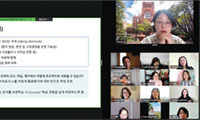




















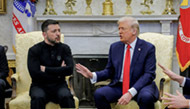




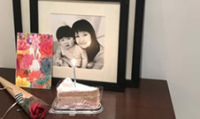

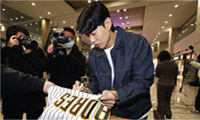
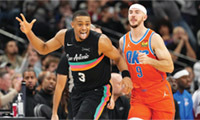














.png)


댓글 안에 당신의 성숙함도 담아 주세요.
'오늘의 한마디'는 기사에 대하여 자신의 생각을 말하고 남의 생각을 들으며 서로 다양한 의견을 나누는 공간입니다. 그러나 간혹 불건전한 내용을 올리시는 분들이 계셔서 건전한 인터넷문화 정착을 위해 아래와 같은 운영원칙을 적용합니다.
자체 모니터링을 통해 아래에 해당하는 내용이 포함된 댓글이 발견되면 예고없이 삭제 조치를 하겠습니다.
불건전한 댓글을 올리거나, 이름에 비속어 및 상대방의 불쾌감을 주는 단어를 사용, 유명인 또는 특정 일반인을 사칭하는 경우 이용에 대한 차단 제재를 받을 수 있습니다. 차단될 경우, 일주일간 댓글을 달수 없게 됩니다.
명예훼손, 개인정보 유출, 욕설 등 법률에 위반되는 댓글은 관계 법령에 의거 민형사상 처벌을 받을 수 있으니 이용에 주의를 부탁드립니다.
Close
x